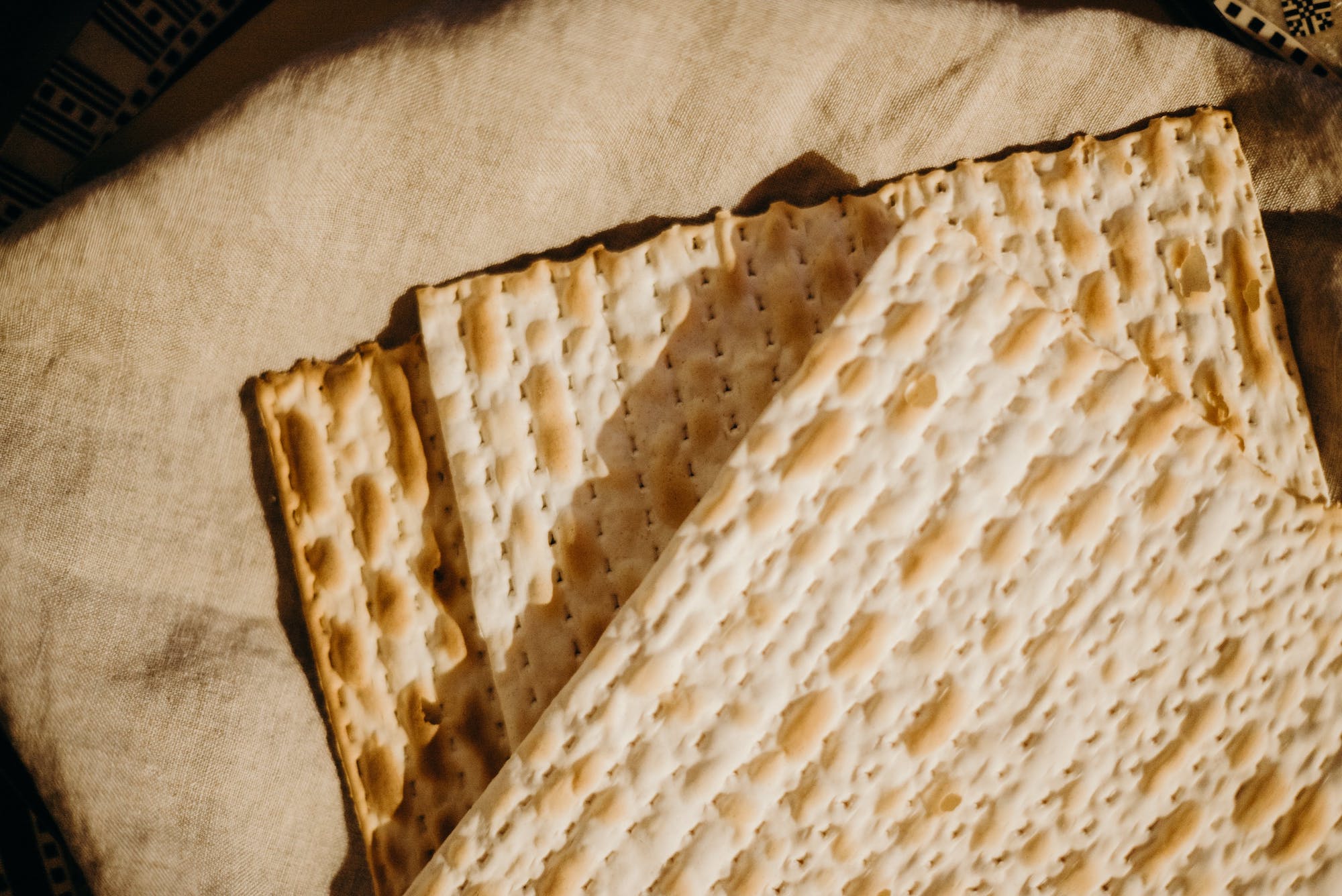
Most of us regard Passover as a Jewish celebration. What significance could it have for modern-day Christians? Does it make sense to have a Christian celebration of Passover?
But celebrating the Passover with a communal meal, called a Seder, can teach our families about the fulfillment of Scripture as Christ became the Passover lamb. Here’s how to celebrate Passover as a Christian.
“You shall observe this rite as a statute for you and for your sons forever. And when you come to the land that the LORD will give you, as he has promised, you shall keep this service. And when your children say to you, ‘What do you mean by this service?’ you shall say, ‘It is the sacrifice of the LORD’s Passover, for he passed over the houses of the people of Israel in Egypt, when he struck the Egyptians but spared our houses.’ And the people bowed their heads and worshiped.” – Exodus 12:24-27
A Brief History of Passover
A quick history lesson: The Jews, God’s chosen race, had been enslaved by the Egyptians. Before Pharaoh granted the Jews freedom, God sent 10 plagues upon the Egyptians. (Read the book of Exodus to get the full, fascinating story).
The final plague led to the Passover. The tenth plague was the killing of the firstborn.
God was sending a death angel to kill the firstborn in the land, from the Pharaoh’s child to the cattle’s firstborn. But God gave the Jews specific instructions to protect their families from the death angel.
They were to take the blood from an unblemished lamb and spread the blood on their door post to signal to the death angel that it should pass over that home. The lamb was then roasted and served with unleavened bread and bitter herbs.
That night, as cries of grief and distress rose from all of the Egyptian homes, the Jews ate their first Passover meal in preparation for their flight from Egypt. God was delivering them from slavery to the land he had promised them.

How to Host a Christian Celebration of Passover
Jesus Christ is our perfect sacrificial lamb. His blood was shed to free us from slavery and deliver us from eternal death.
As a Christian family, you can share these eternal truths in your own simplified Seder during Passover week as you remember the sacrifice of Christ.
Items needed:
• Leafy branch
• Red poster paint
• Board or door post to paint
• Roast lamb (I’m purchasing a small amount from our local Greek restaurant)
• Hard-boiled egg (traditionally roasted in ashes)
• Bitter herbs or horseradish
• Parsley and Lettuce
• Charoseth (a mixture of apples, cinnamon, honey, nuts and wine or grape juice)
• Salt water
• Cup of grape juice
• Unleavened bread or Matzah (you can use Saltine cracker or purchase Matzah)
1. Begin by reading the account of the Passover in Exodus 12.
2. Using a branch to represent the hyssop, paint a door frame or board with “blood” (red paint). As your child paints the “door frame,” quote the Jews’ proclamation: “This is the blood of the perfect lamb who protects us all from slavery to sin and eternal death. Blessed is His name.”
3. Move on to the meal. First introduce the lamb. Emphasize the importance of the unblemished lamb. The purpose of the lamb was to be a substitute sacrifice for the Jews’ suffering. Jesus was our substitute for spiritual death and was perfect, or unblemished.
4. The egg: Explain that the egg would have traditionally been roasted in hot ashes to represent the harshness of life in Egypt. The egg symbolized a new life for the Jews. When Christ comes into our heart, we have a new life in Him. That is also why we have Easter eggs.
5. The bitter herbs or horseradish: These represent the bitterness of the Jews’ slavery. As Christians, it represents the slavery of sin in our lives that Christ has liberated us from.
6. Parsley and lettuce: This is symbolic of the hyssop the Jews used to paint the door frames with blood as a sign of their obedience to God. Hyssop also symbolizes cleansing (Psalm 51:7 and in several passages in Leviticus).
Jesus shed his blood to cleanse us. In the account of Christ’s crucifixion in John 19:29, a sponge of vinegar was placed on a hyssop branch to give to Jesus to relieve his thirst. Immediately after tasting the vinegar, he said, “It is finished,” and died.
7. Charoseth: A mixture of sweet elements with apples reminded the Jews of the mud bricks they had to make in slavery. Today, we remember how our souls were enslaved by our sin and how Jesus delivered us.
8. Salt Water: This symbolized the tears of the Jews while enslaved. We need to be sorrowful for our sin in true repentance.
9. Cup of grape juice: In the traditional Jewish Seder, there are many ceremonial cups of wine. The third cup is called the Cup of Redemption (meaning “rescue on payment of ransom”).
By drinking this wine, the Jews acknowledged their rescue from slavery with the ransom of the lamb’s blood. Today, we remember Jesus’ blood that was shed to pay our ransom. (This actually was the cup that Jesus used when he introduced the Communion.)
10. Unleavened bread or Matzah: Passover is also called Feast of Unleavened Bread. God commanded the Jews to make their bread without leaven (or yeast). In fact, they were not even allowed to have leaven in their homes, or they would be cut off from their people.
Leaven, or yeast, causes the dough to ferment and rise and represented impurity or sin as it decays and changes the original ingredients. Thus, sin in our lives causes decay. The unleavened bread represents purity from sin.
—
A traditional Seder is a ceremony with many traditions and recitations involving the entire family. For some video assistance watch this How to Host a Seder video.
Have you hosted a Passover meal with your family? We’d love to hear how it went!
—
*This post was originally published April 3, 2020

This is awesome, Julia! Thank you!
Thank you for the article although it was written quite sometime ago it helped me out tons!
The only matter in which I did not like is the term Jews. This term wasn’t used till sometime after the 10 tribes went into exile and only two remained Judah being one of the remaining.
Any article in writing about the passover or events from the Old Testament of the people were Hebrews (Israel) thus Jews (Judaism) was not until Israel continued their disobedience to YHWH and are still in exile until the sentence is up as written. Even today Jews who were at birth or converted aren’t necessary from the tribes of Judah, Benjamin, Levi.
Thank you for your grace-filled correction & education, Christine!
This is great and in a great spirit. I wanted to give a friendly correction. To refer to the Israelites as the “Jews” is error. So is considering it a “Jewish” celebration. It was given to all 12 tribes and it is a Hebrew thing. Judah was 1 tribe of the 12. Also the southern kingdom of Judah consisted of Judah and Benjamin. The other 10 tribes (northern house of isreal) are scattered and are the blessing to the gentiles for us to be “grafted into” Isreal. So it is our festival/appointed time. Yahweh said “these are my festivals, my appointed times”
Love and blessings
I appreciate your education on this, Garret- especially with friendliness & grace!
Easter egg came from the Romans. Not a good thing. look up the REAL reason for the egg. It wasn’t a Christain celebration, it was pagon.
This is a wonderful way to illistrate the fortelling of the Messiah, the Lamb of God who would take away the sin of the world, Jesus Christ.
I’m glad they don’t delete old posts! As a Christian grandfather and husband, I want to be found a delight in our heavenly father’s eyes. With passover 2015 approaching, I want to make sure I do the seder right. Thank you for posting… Even after so much time has passed!
I’m thankful you found the post helpful, Mr. Daniel. In previous comments, you will see that I incorrectly referred to ‘Jews’ & ‘Jewish’ practices. I should have used the word Hebrew, instead.
Thank you so much for the article. I celebrated Passover with Jewish people last your the first time an it was awesome. You have everything down to a T. I was wondering how Christians woul celebrate this, and you did excellent explaining. So thank you thank you thank you
Yes! Thank you for the article!
I’m glad you were able to celebrate Passover, Victoria. What a rich experience! In previous comments, you will see that I incorrectly referred to ‘Jews’ & ‘Jewish’ practices. I should have used the word Hebrew, instead.
I really appreciate you posting this, I and a few of my close friends as well as family will be celebrating the Passover correctly this year thanks to you posting this. Shalom my sister.
I am sure you will be blessed by the experience, Romereo. In previous comments, you will see that I incorrectly referred to ‘Jews’ & ‘Jewish’ practices. I should have used the word Hebrew, instead.
Shalom.
Great article thankyou.. i am confused about the egg thing though. I know easyer eggs are a pagan symbol, did the Hebrews use eggs in the original passover? Ill have to read about it.